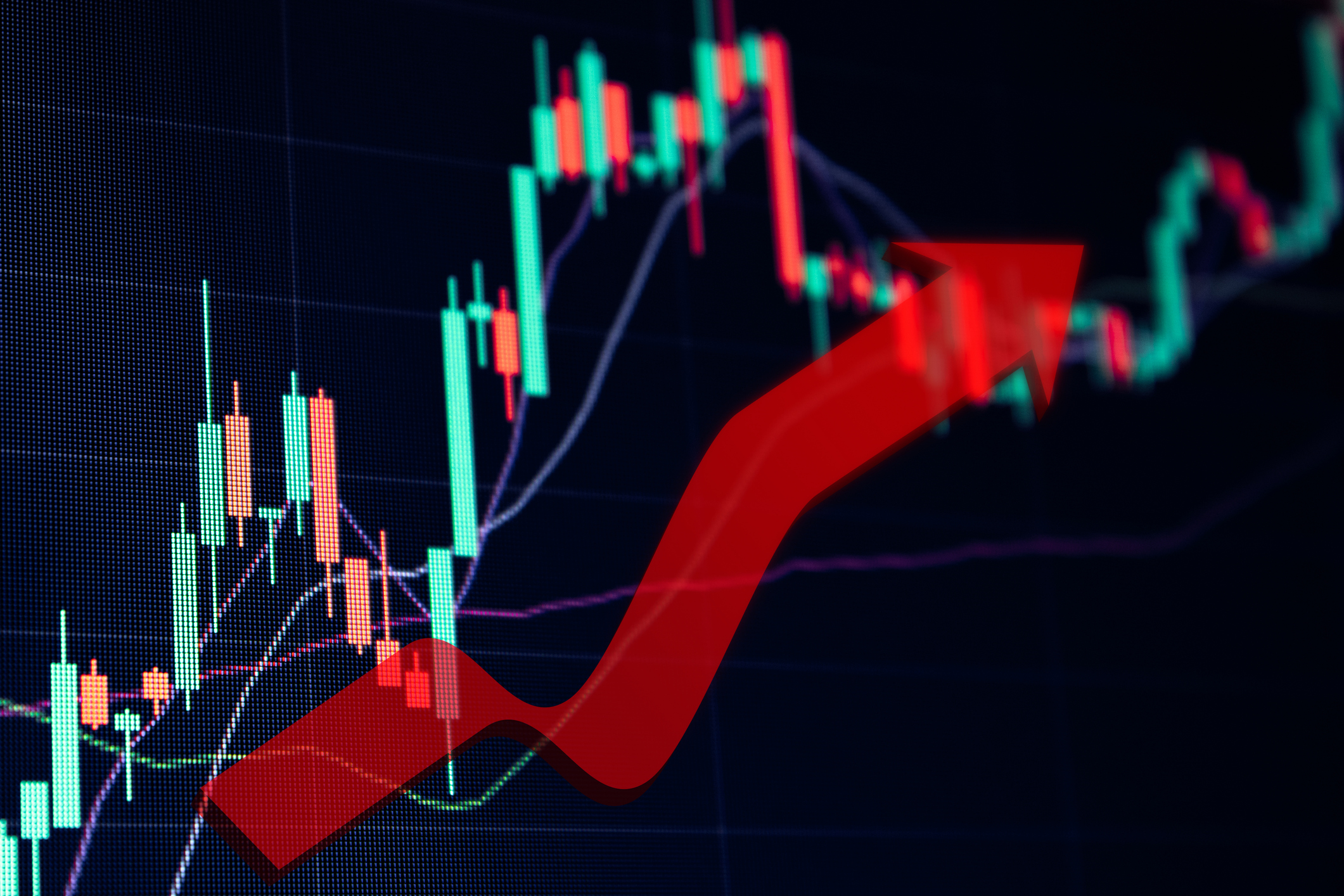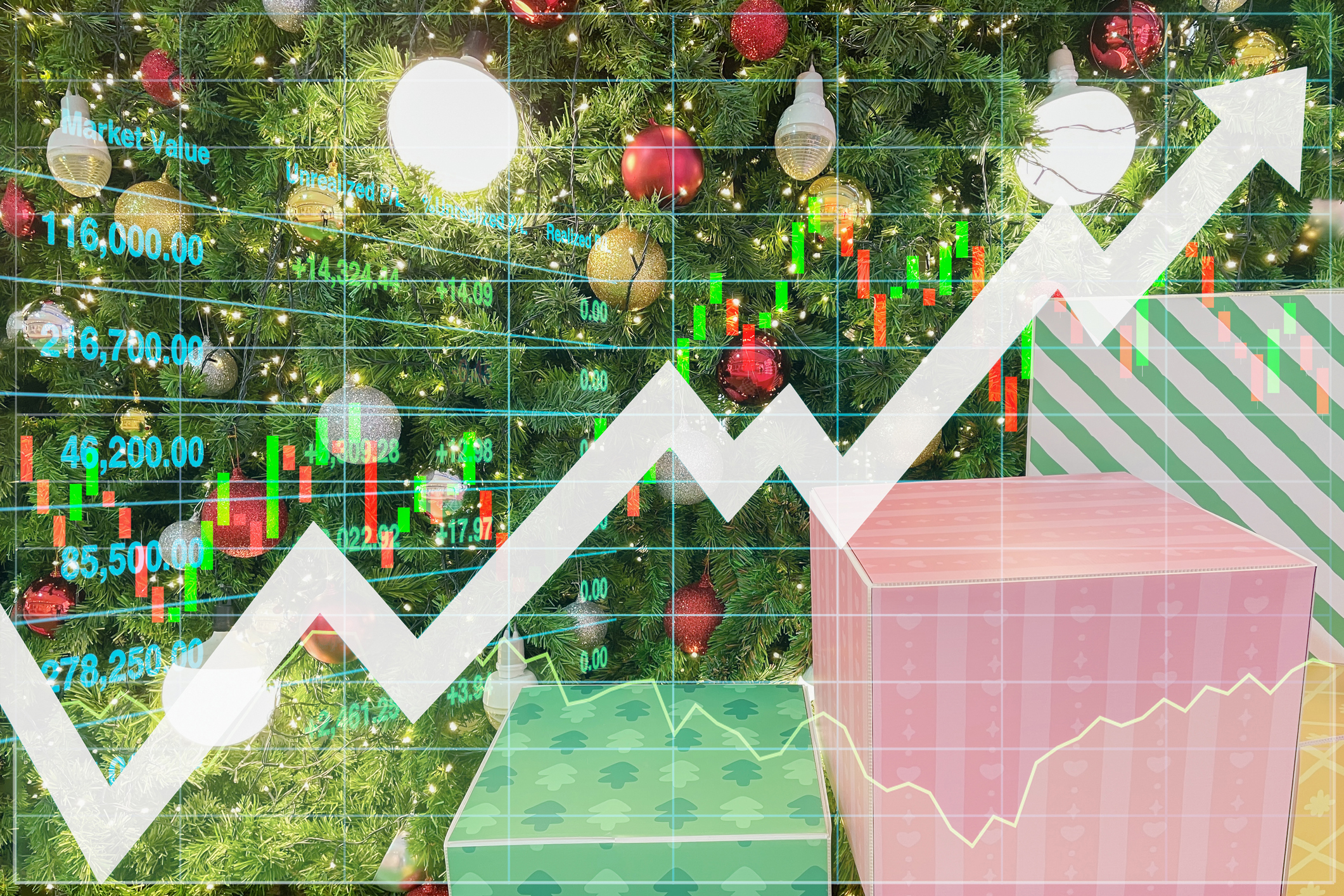Stock Market Today: Trump Pushes Dow Into 2,600-Point Swing
Tariffs and Trade War weigh on prices across global financial markets, with little light at the end of the tunnel.



A rumor of trade war truce sent the main U.S. equity indexes soaring off their intraday lows to their intraday highs within a little more than half an hour on Monday morning, setting the pattern for another volatile session for financial markets.
Investors, traders, and speculators rode stocks back below and back above the breakeven line on dip-buying driven by technical factors as well as hope that any tariff-and-trade-war reprieve will trigger a fresh rally.
The Cboe Volatility Index (VIX) peaked above 60 in pre-market trading Monday morning and hovered just below 50 as the opening bell rang after the president said over the weekend that markets may need to "take medicine" in the wake of his announced tariffs, which he called “a beautiful thing to behold.”
From just $107.88 $24.99 for Kiplinger Personal Finance
Become a smarter, better informed investor. Subscribe from just $107.88 $24.99, plus get up to 4 Special Issues

Sign up for Kiplinger’s Free Newsletters
Profit and prosper with the best of expert advice on investing, taxes, retirement, personal finance and more - straight to your e-mail.
Profit and prosper with the best of expert advice - straight to your e-mail.
President Donald Trump threatened to raise tariffs on China again if Beijing doesn't remove its retaliatory tariffs on the U.S. by Tuesday. Even so, stocks settled and traded sideways to higher in the afternoon.
The VIX was as low as 20.68 on April 2 and closed that day at 21.51. It spiked to a high of 30.02 at the close on April 3, then to 45.31 on Friday. A "simple" and useful interpretation of the "fear gauge" offered by Tim Edwards and Hamish Preston of S&P Dow Jones Indices "takes a VIX level below 12 to be 'low,' a level above 20 to be 'high,' and a level in between to be 'normal.'"
"The historic drop in equity markets last week left investors in a state of panic," writes LPL Financial Chief Technical Strategist Adam Turnquist.
At the same time, Turnquist suggests we may have reached a critical turning point: "Readings of this magnitude are not only historically rare, but they also often overlap near major capitulation points in market sell-offs."
Data compiled by Turnquist show that since 1992, "when the intraday VIX high reached 30.1 or more, one-, six-, and 12-month S&P 500 returns averaged 1.5%, 7.4%, and 15.6%, respectively."
The VIX settled in at 48.01 by the closing bell.
Meanwhile, the blue-chip Dow Jones Industrial Average lost 0.9% to 37,965. The broad-based S&P 500 Index shed 0.2% to 5,062. But the tech-heavy Nasdaq Composite rose 0.1% at 15,603.
But is bitcoin a store of value?
Bitcoin (BTC) held up relatively well last Thursday and Friday and into Saturday but started to crack like traditional financial assets on Sunday.
BTC added 0.7% and 0.9%, respectively, while the S&P 500 subtracted 4.8% then 6.0%. It traded as high as $84,207 in U.S. dollar terms on Saturday. It traded down 8.4% to $77,097 on Sunday.
One of the best bitcoin ETFs to buy for exposure to the world's No. 1 cryptocurrency, the iShares Bitcoin Trust ETF (IBIT), was down 5.7% Thursday and recovered 2.4% on Friday but was down 7.2% on Monday.
Making a weekend appearance with the prominent conservative podcaster Tucker Carlson, Treasury Secretary Scott Bessent said the world's No. 1 cryptocurrency "is becoming a store of value."
Bessent noted that gold "has historically been a store of value," explaining that history has seen "a lot of different stores of value over time."
Even gold has suffered during this historic volatility, with the front-month futures contract for the precious metal down 4.5% in U.S. dollar terms and the SPDR Gold Shares (GLD) down 4.9% from its April 2 closing price.
It's a good time to investigate the question, is investing in gold worth it?
But remember, this is no time to panic.
What about the Fed?
"I don't know if they can even make it to the May meeting before they start bringing rates down," said Bob Michele, global head of fixed income at JPMorgan Asset Management, on Bloomberg, suggesting the Federal Reserve may have to cut interest rates before its next meeting.
The next Fed meeting is scheduled for May 6-7. "If you step back and look at the totality of what's going on," Michele emphasized, "you cannot believe that there's nothing under the surface that’s going to break."
Fed Chair Jerome Powell said Friday that while Trump's tariff policy is "significantly larger than expected" and will have a bigger impact on the economy and inflation than initially anticipated, all data he's seeing, although backward-looking, indicates a resilient economy.
Powell added that the Fed is well-positioned to address whatever is to come. His comments came on a day when tariff turmoil overshadowed a strong March jobs report.
As Michele sees it, Powell is saying the Fed is "going to wait for the accident before they respond."
According to 30-day federal funds rate futures prices, the probability of a rate cut at the May FOMC meeting has surged from 14% as of March 31 to 35% today.
Related content
- Stock Markets Are Tanking: Here’s How Retirees Can Stay Calm
- Best Defensive Stocks to Buy Now
- The Best Value Stocks to Buy
Profit and prosper with the best of Kiplinger's advice on investing, taxes, retirement, personal finance and much more. Delivered daily. Enter your email in the box and click Sign Me Up.

David Dittman is the former managing editor and chief investment strategist of Utility Forecaster, which was named one of "10 investment newsletters to read besides Buffett's" in 2015. A graduate of the University of California, San Diego, and the Villanova University School of Law, and a former stockbroker, David has been working in financial media for more than 20 years.
-
 Vesting, Catch-Ups and Roths: The 401(k) Knowledge Quiz
Vesting, Catch-Ups and Roths: The 401(k) Knowledge QuizQuiz Test your understanding of key 401(k) concepts with our quick quiz.
-
 Why You Should Pay Attention to Company Guidance
Why You Should Pay Attention to Company GuidanceUnderstanding how corporate profit forecasts affect analysts’ estimates and stock ratings can help you make investment decisions.
-
 How to Protect Yourself and Others From a Troubled Adult Child
How to Protect Yourself and Others From a Troubled Adult ChildThis case of a violent adult son whose parents are in denial is an example of the extreme risks some parents face if they neglect essential safety precautions.
-
 Why You Should Pay Attention to Company Guidance
Why You Should Pay Attention to Company GuidanceUnderstanding how corporate profit forecasts affect analysts’ estimates and stock ratings can help you make investment decisions.
-
 How to Protect Yourself and Others From a Troubled Adult Child: A Lesson from Real Life
How to Protect Yourself and Others From a Troubled Adult Child: A Lesson from Real LifeThis case of a violent adult son whose parents are in denial is an example of the extreme risks some parents face if they neglect essential safety precautions.
-
 To Build Client Relationships That Last, Embrace Simplicity
To Build Client Relationships That Last, Embrace SimplicityAs more automation becomes the norm, you can distinguish yourself as a financial professional by using technology wisely and prioritizing personal touches.
-
 Client Demand Is Forcing Financial Advisers to Specialize: How to Deliver
Client Demand Is Forcing Financial Advisers to Specialize: How to DeliverThe complexity of wealthy clients' needs — combined with AI and consumer demand — suggests the future of financial planning belongs to specialized experts.
-
 Stocks Rise to the Spirit of the Season: Stock Market Today
Stocks Rise to the Spirit of the Season: Stock Market TodayInvestors, traders and speculators are beginning to like the looks of a potential year-end rally.
-
 A Financial Planner Takes a Deep Dive Into How Charitable Trusts Benefit You and Your Favorite Charities
A Financial Planner Takes a Deep Dive Into How Charitable Trusts Benefit You and Your Favorite CharitiesThese dual-purpose tools let affluent families combine philanthropic goals with advanced tax planning to generate income, reduce estate taxes and preserve wealth.
-
 A 5-Step Plan for Parents of Children With Special Needs, From a Financial Planner
A 5-Step Plan for Parents of Children With Special Needs, From a Financial PlannerGuidance to help ensure your child's needs are supported now and in the future – while protecting your own financial well-being.
-
 How Financial Advisers Can Best Help Widowed and Divorced Women
How Financial Advisers Can Best Help Widowed and Divorced WomenApproaching conversations with empathy and compassion is key to helping them find clarity and confidence and take control of their financial futures.